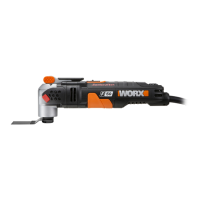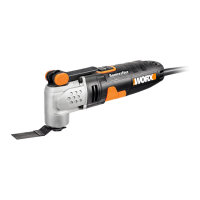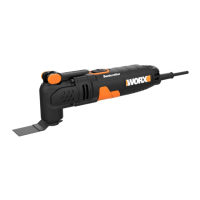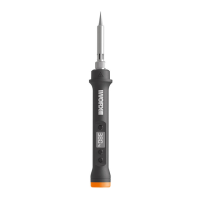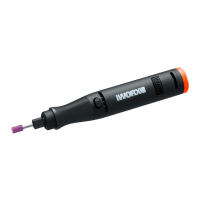10
20V Cordless Oscillating Tool EN
The use of the correct accessory for the tool and
ensuring it is sharp and in good condition.
The tightness of the grip on the handles and if any
anti vibration and noise accessories are used.
And the tool is being used as intended by its design
and these instructions.
This tool may cause hand-arm vibration
syndrome if its use is not adequately managed.
WARNING: To be accurate, an estimation of
exposure level in the actual conditions of use
should also take account of all parts of the operating
cycle such as the times when the tool is switched off
and when it is running idle but not actually doing the
job. This may significantly reduce the exposure level
over the total working period.
Helping to minimise your vibration and noise
exposure risk.
Always use sharp chisels, drills and blades.
Maintain this tool in accordance with these
instructions and keep well lubricated (where
appropriate).
If the tool is to be used regularly then invest in anti
vibration and noise accessories.
Plan your work schedule to spread any high vibration
tool use across a number of days.
OPERATION INSTRUCTIONS
Note: Before using the tool, read the
instruction book carefully.
INTENDED USE
The power tool is intended for sawing and
remodeling wooden materials, plastic, plaster, non-
ferrous metals and fasteners (e.g. nails) as well as
for working on soft wall tiles and for dry grinding of
small surfaces. It is especially suitable for working
close to edges and for flush cutting.
ASSEMBLY AND OPERATION
ACTION FIGURE
Mounting Accessories
--Remove the Onboard hex wrench
See Fig. A
--Loosen the flange and insert accessories
See Fig. B1,
B2, B3
--Tighten the flange See Fig. C
--Store the Onboard hex wrench See Fig. D, E
Operating the On/Off Switch See Fig. F
Using the Variable Speed Dial See Fig. G
Remove or Install Battery Pack
See Fig.
H1,H2
LED Light See Fig.I
The Variable Speed Dial can be used to set the
optimum oscillating frequency according to the
accessories used and the respective application.
Oscillation
frequency
Application
High oscillation
frequency:
Sanding, sawing, rasping
and polishing stone and
metal.
Low oscillation
frequency:
Scraping, polishing
varnishes.

